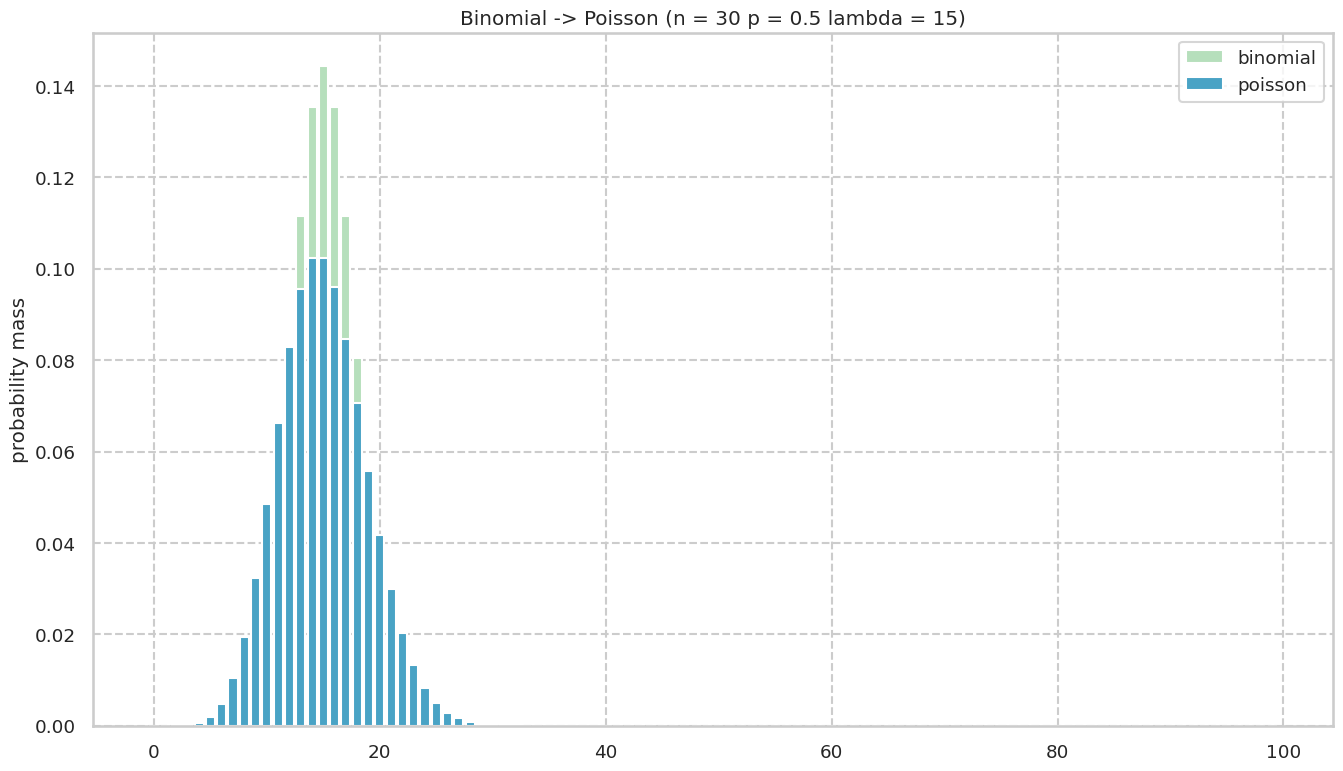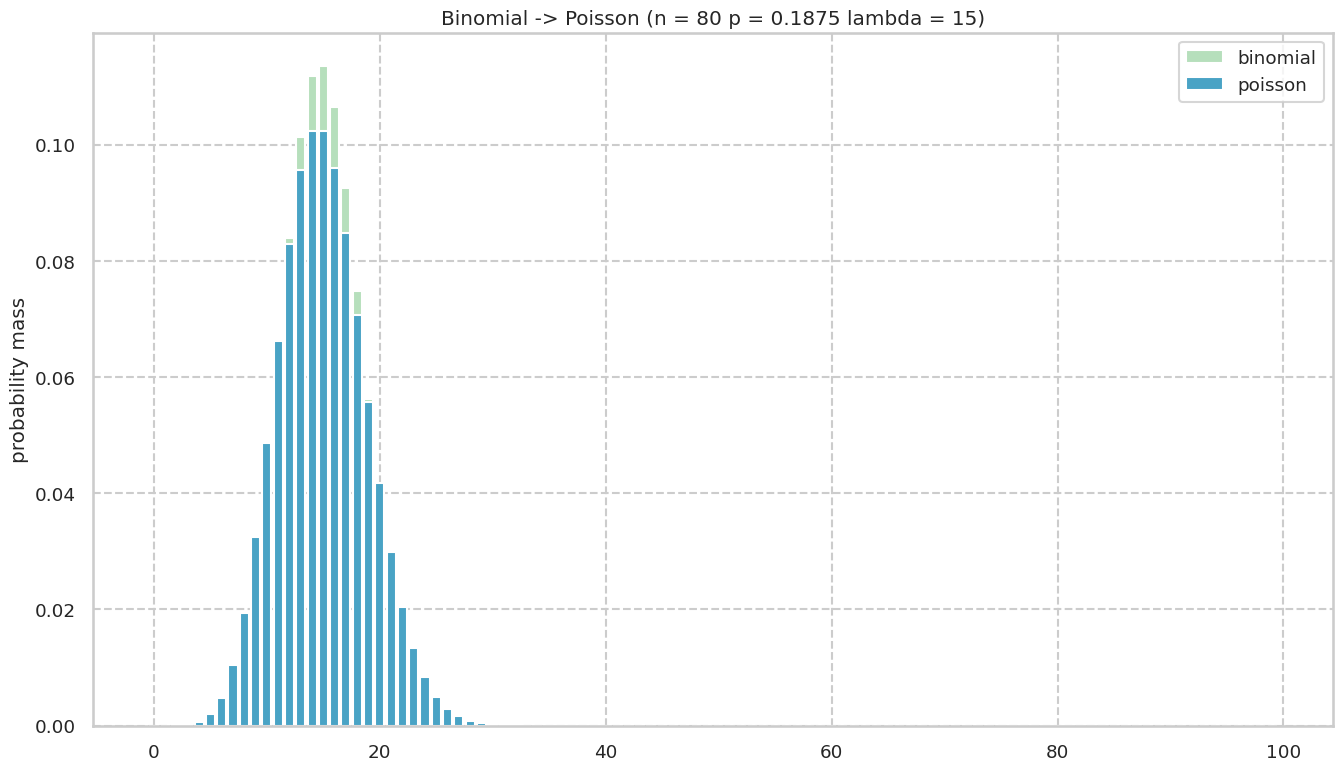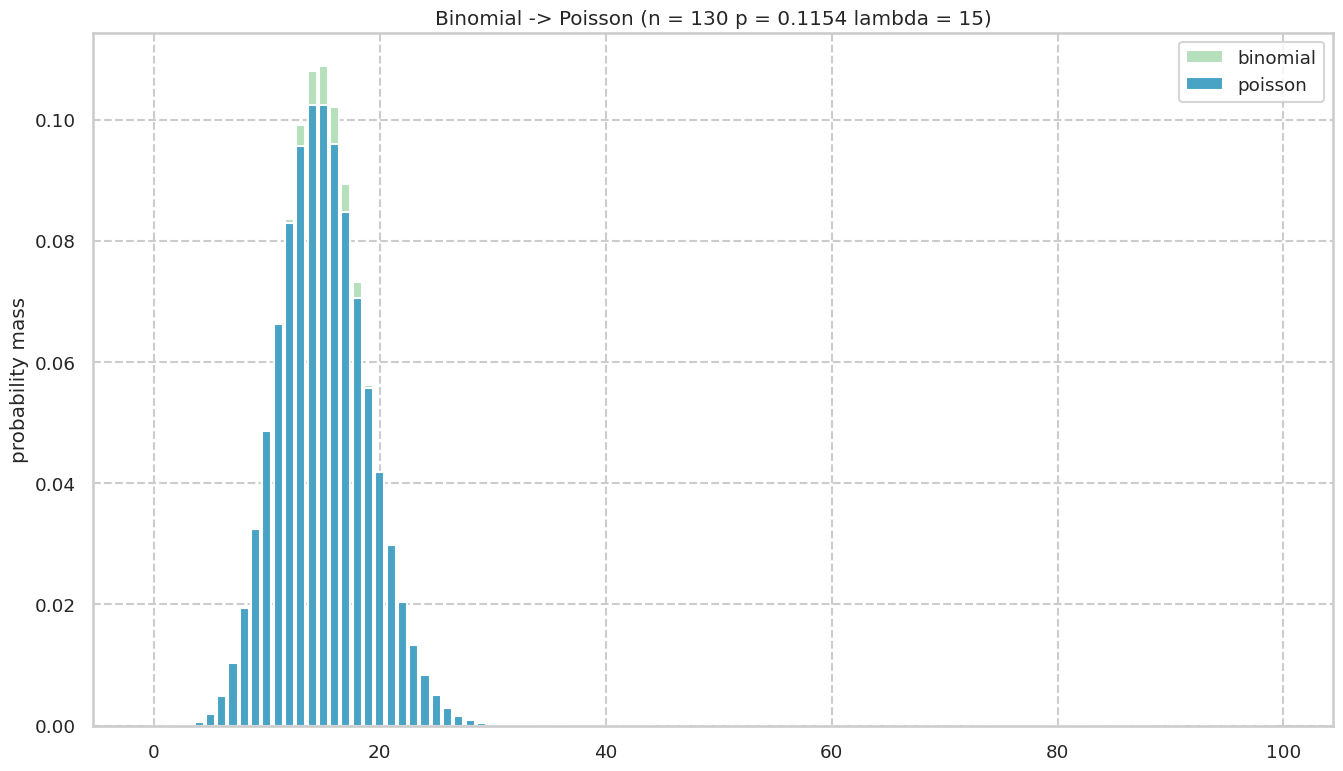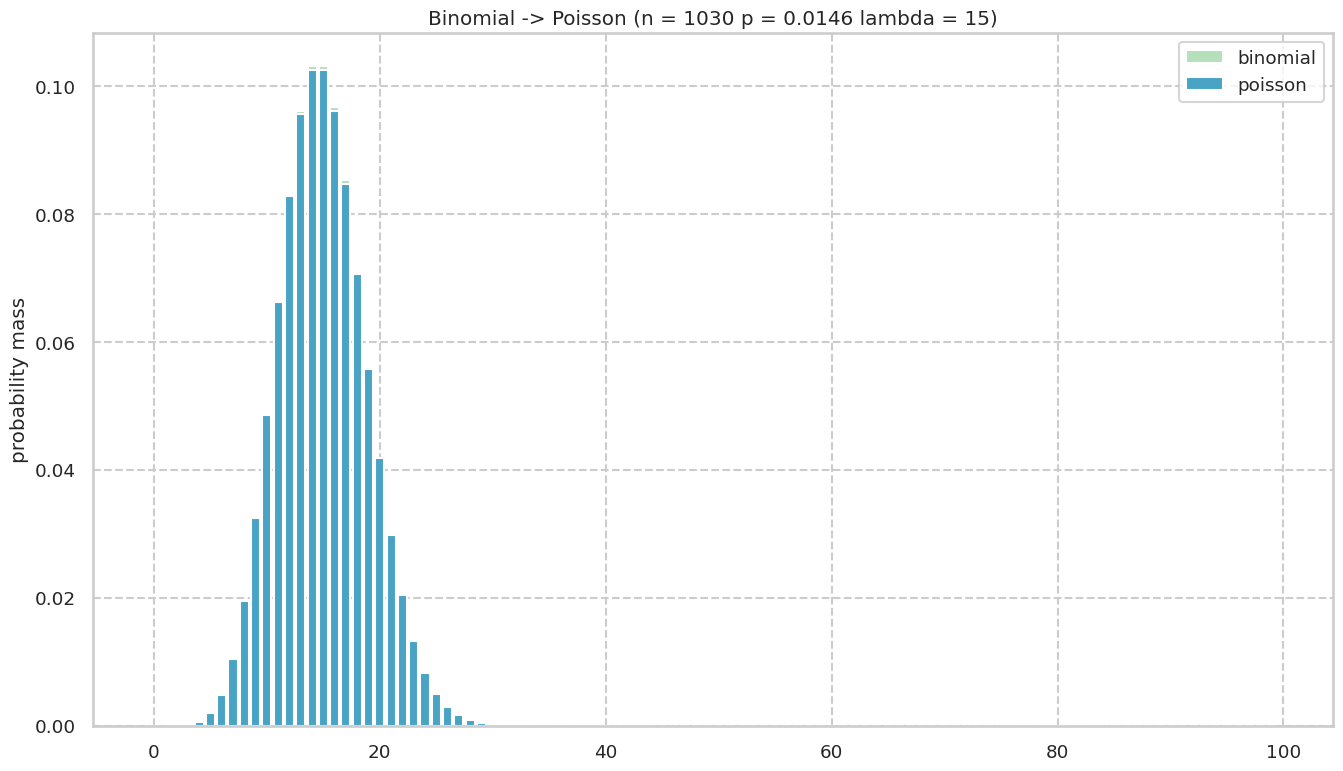📊
[統計学] ポアソンの小数法則の証明と可視化
はじめに
この記事はポアソンの小数法則の証明と可視化を行なっている. なお, ポアソン分布の性質については下記の記事にまとめている.
ポアソンの小数法則
以下が成り立つ.
証明
注意
以下に注意する.
指数関数のマクローリン展開
導出にあたり以下の式を用いるので先に証明する.
証明:
下記のマクローリン展開を実行する. なお,
上式において
マクローリン展開の可視化 | Shundeveloper
左辺の変形
- 右辺第五行の総積に
n^{-x} n-(n-x)=x
左辺を変形した式の極限をとる
可視化
証明ができたのでシュミレーションして近似ができることを確認する.
実験用コード
シュミレーションに使うクラスを作成.
import math
import numpy as np
import matplotlib.pyplot as plt
import seaborn as sns
from scipy.stats import binom, poisson
class Poisson:
def __init__(
self,
n_: float,
lambda_: float
) -> None:
"""
Explain
------
constructor. create three property.
Parameter
------
self: Poisson
n_: float
lambda_: float
"""
self.n_ = n_
self.lambda_ = lambda_
self.p_ = self.lambda_/self.n_
def plot(
self,
) -> None:
"""
Parameter
------
self: Poisson
"""
# create array for plot
x = np.arange(0, 100, 1)
binomial_list = [binom.pmf(k, n=self.n_, p=self.p_) for k in x]
poisson_list = [poisson.pmf(k, self.lambda_) for k in x]
# seaborn settings
sns.set()
sns.set_style('whitegrid', {'grid.linestyle': '--'})
sns.set_context('talk', 0.8, {'lines.linewidth': 0})
sns.set_palette('GnBu', 2, 0.9)
# make plot title
basic_title: str = 'Binomial -> Poisson'
n_info = ' (n = ' + str(round(self.n_, 4))
p_info = ' p = ' + str(round(self.p_, 4))
lambda_info = ' lambda = ' + str(round(self.lambda_, 4)) + ')'
title = basic_title + n_info + p_info + lambda_info
# plot
fig=plt.figure(figsize=(16,9))
ax1 = fig.add_subplot(1, 1, 1)
ax1.set_title(title)
ax1.set_ylabel('probability mass')
ax1.bar(x, binomial_list)
ax1.bar(x, poisson_list)
ax1.legend(['binomial', 'poisson'])
plt.show()
def add_n(self, num: int) -> None:
"""
add num to self.n_ and calc new self.p_
Parameter
------
self: Poisson
num: int
"""
if isinstance(num, int) is False:
raise TypeError("type of num must be int")
self.n_ += num
self.p_ = self.lambda_/self.n_
インスタンスを作成してポアソンの小数法則をシュミレーションする.
po = Poisson(n_=30, lambda_=15)
for i in range(3):
po.plot()
po.add_n(num=50)
結果



1000回にもなるとほとんど同じように見える.
po = Poisson(n_=30, lambda_=15)
po.add_n(num=1000)
po.plot()





Discussion